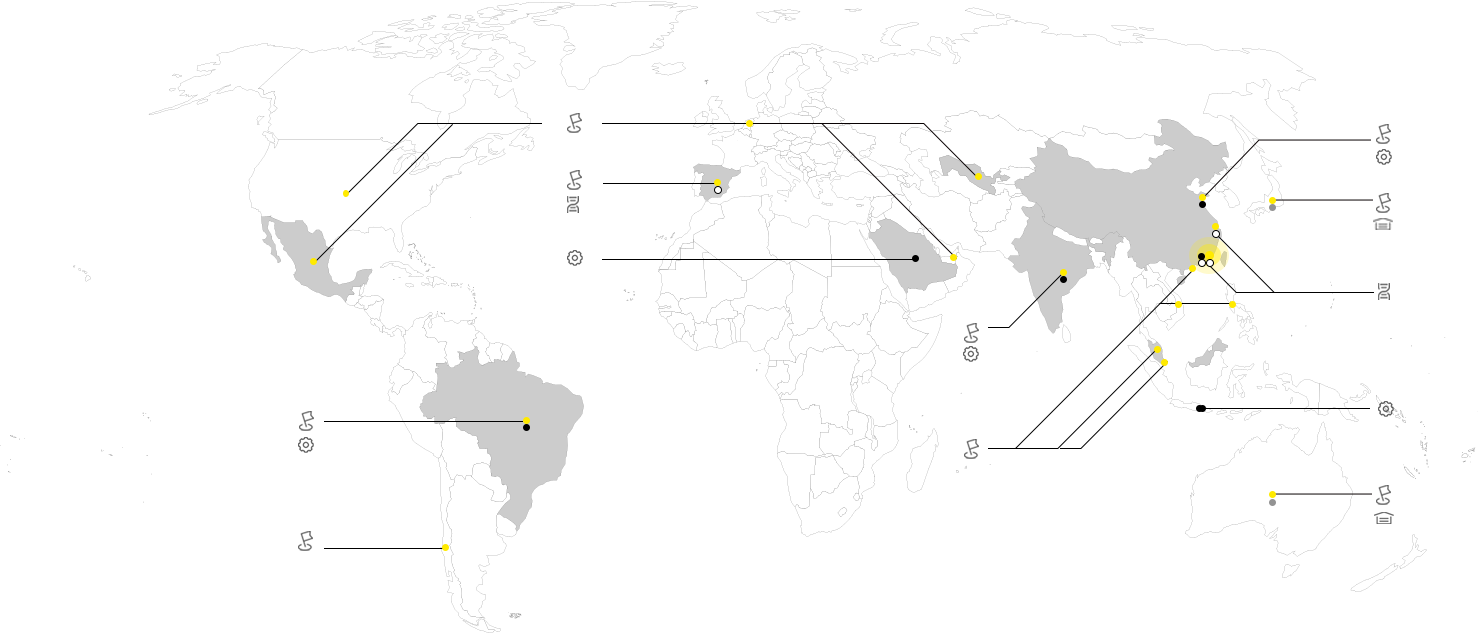
4.How do solar tracking systems perform in different climates?
>
Solar Sunflowers are designed to operate across a wide range of temperatures and are built with corrosion-resistant materials. They use automated stow strategies to protect against high winds and snow loads, making them adaptable to diverse climates from hot deserts to colder, snowy regions.
5.What are the rotation angles for dual-axis trackers?
>
Dual-axis trackers typically offer a wide range of motion. The azimuth (east-west) rotation is often close to 360 degrees, while the elevation (tilt) angle can typically move from horizontal (0°) to nearly vertical (90°). The exact range is model-specific.
6.What is the typical installation timeframe for a Solar Sunflower?
>
Solar Sunflower systems are designed for quick installation, after site preparation and foundation curing, the unit can typically be installed and commissioned in a matter of hours or a day.
7.What land area is required for a Solar Sunflower installation?
>
The system requires a relatively small footprint for its foundation, but it needs a clear, circular area around it to allow the petals to unfold and track without obstruction. The specific radius required is listed on the product's data-sheet.
8.How much more efficient are Solar Sunflower systems vs fixed panels?
>
The energy production increase around 30-40% for dual-axis trackers when it is compared to fixed or fixed-tilt systems. The actual increase depends heavily on the geographic location (specifically the DNI), local weather conditions, and site characteristics.
9.Typical power output range for Solar Sunflower systems?
>
Solar Sunflower systems are typically marketed with a rated power output in the range of a few kilowatts (1kW/1.2kW - 2kW/2.4kW - 3kW) per unit, suitable for residential or small commercial applications. The exact power rating depends on the specific model and the modules used.(Always check the product data-sheet.)
10.How does dual-axis solar tracking increase energy production?
>
By tracking the sun on two axes (azimuth and elevation), the system keeps the solar panels at a near-optimal angle to the sun's rays throughout the day and year. This significantly increases energy yield compared to a fixed-tilt system, especially in locations with high direct normal irradiance (DNI).
11.What is a Solar Sunflower system and how does it work?
>
The photovoltaic Solar Sunflower is a movable and adjustable energy storage system. Using the global positioning tracking algorithm,it can track the sun's path throughout the day. It integrates an inverter and monitoring, with some models offering battery storage and additional options.
12.What is the typical time for solar carport installation?
>
The total timeline varies significantly with project scale. The initial phases of permitting, interconnection approval, and engineering often take several weeks to months(Depending on region). The on-site installation itself should take less then a day.
13.Do I need building permits for solar carport installation?
>
Yes, building permits and electrical permits are almost always required. For more information you should contact your local government.
14.Can I connect the solar carport to my home's electrical system?
>
Yes, a solar carport is designed to connect to a home or building's electrical panel. This allows the power to be consumed on-site first, reducing electricity bills.
15.What additional accessories are available for solar carports?
>
Additional accessories include integrated LED lighting, custom branding, and built-in EV charging stations, battery energy storage/inverter.
33
